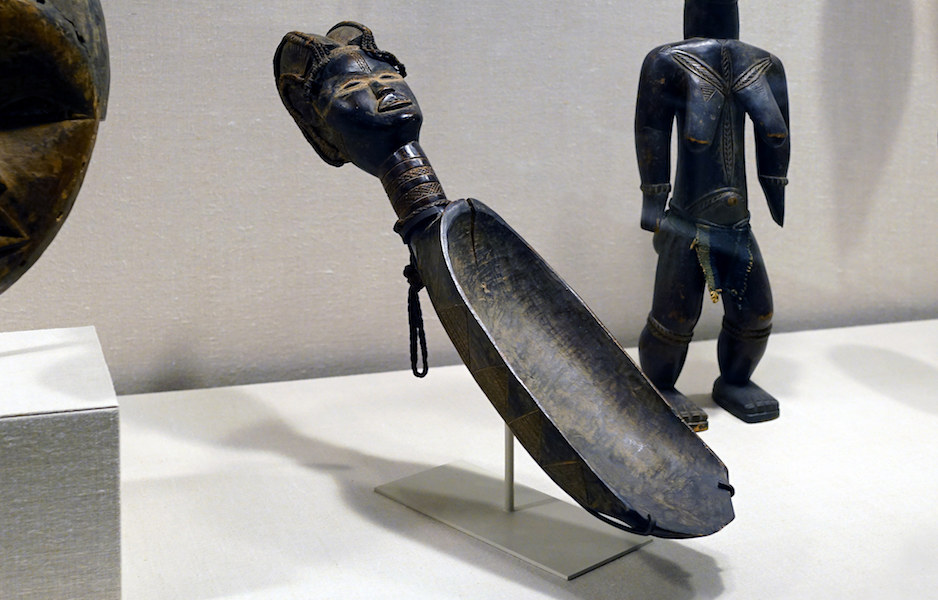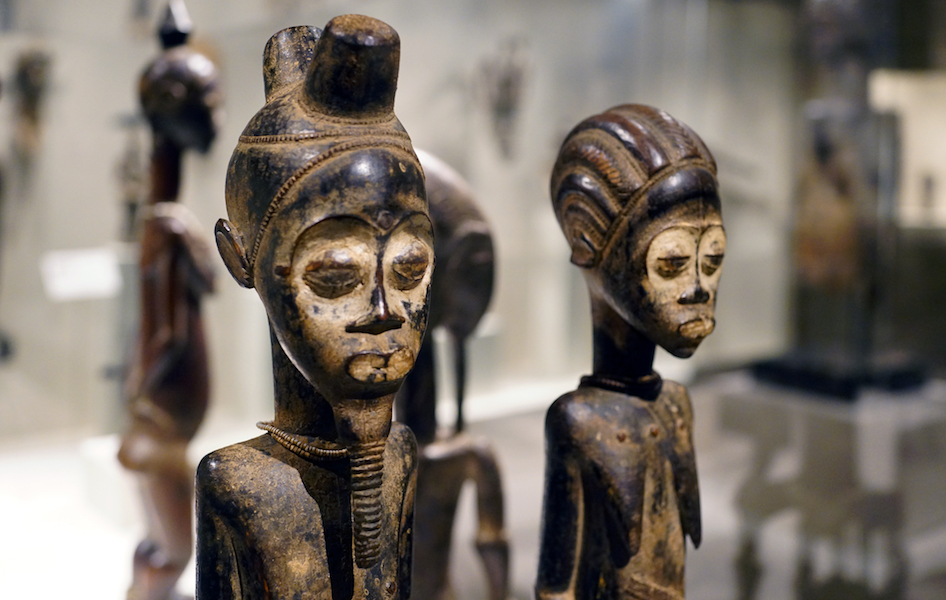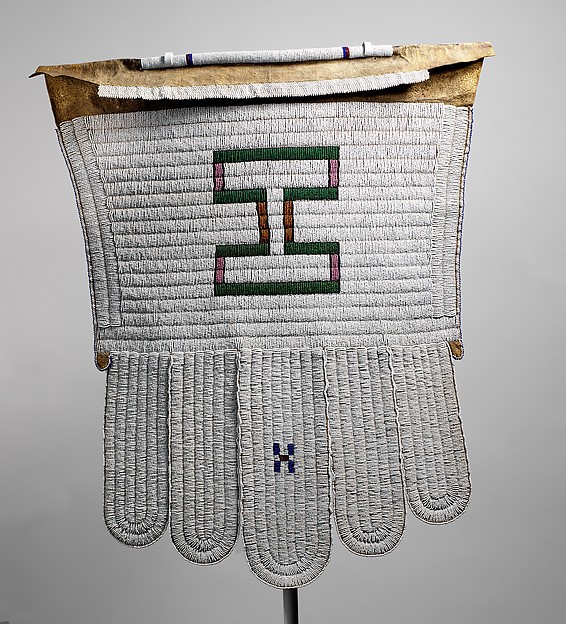
Zlan of Belewale, Ceremonial Ladle (Wakemia or Wunkirmian), before 1960, Dan peoples, wood, fiber, metal, pigment, 13.3 × 58.4 cm (The Metropolitan Museum of Art)
While many kinds of African art are employed in communal contexts, others serve the needs of individuals. Domestic furnishings and objects of personal use, while practical in purpose, also have an aesthetic dimension. The artistic enhancement of objects of utilitarian function reflect and reinforce an individual’s standing and status in society. Details of form and decoration personalize an object, marking it as the property of a specific individual and, occasionally, providing information about ethnic affiliation, social status, or rank. At the same time, the artistic inventiveness and careful execution of such works clearly indicate a desire to integrate aesthetics into daily life.

Detail, Pair of Diviner’s Figures, Côte d’Ivoire, central Côte d’Ivoire, Baule peoples, wood, pigment, beads and iron, 55.4 x 10.2 x 10.5 cm (The Metropolitan Museum of Art)
Personal adornment and dress are important forms of aesthetic expression. Scarification and hairstyle, in particular, are regarded by Africans as means by which the body is refined and civilized. Specifics of bodily ornamentation are often depicted in fine detail on masks and figurative sculpture, indicating their importance as symbols of cultural, personal, and/or professional identity (example above). Dress is also a means of self-expression and definition. Certain forms of textiles identify the wearer by age or status and may also convey personal identity as well (example below). Textiles have also historically been conceived as a form of wealth and their extensive use comments upon the wearer’s access to riches.

Married Woman’s Apron (Ijogolo), 19th-20th century, South Africa, Ndebele peoples, leather, beads and thread, 75.6 x 67.3cm (The Metropolitan Museum of Art)
Additional resources:
Tutsi Basketry on The Metropolitan Museum of Art’s Heilbrunn Timeline of Art History
Rachel Hoffman, Textiles in Mali on Art & Life in Africa (University of Iowa)
Fred T. Smith, Frafra Leatherwork and Brass Bangles on Art & Life in Africa (University of Iowa)
Smarthistory images for teaching and learning:
[flickr_tags user_id=”82032880@N00″ tags=”afrmet,”]

